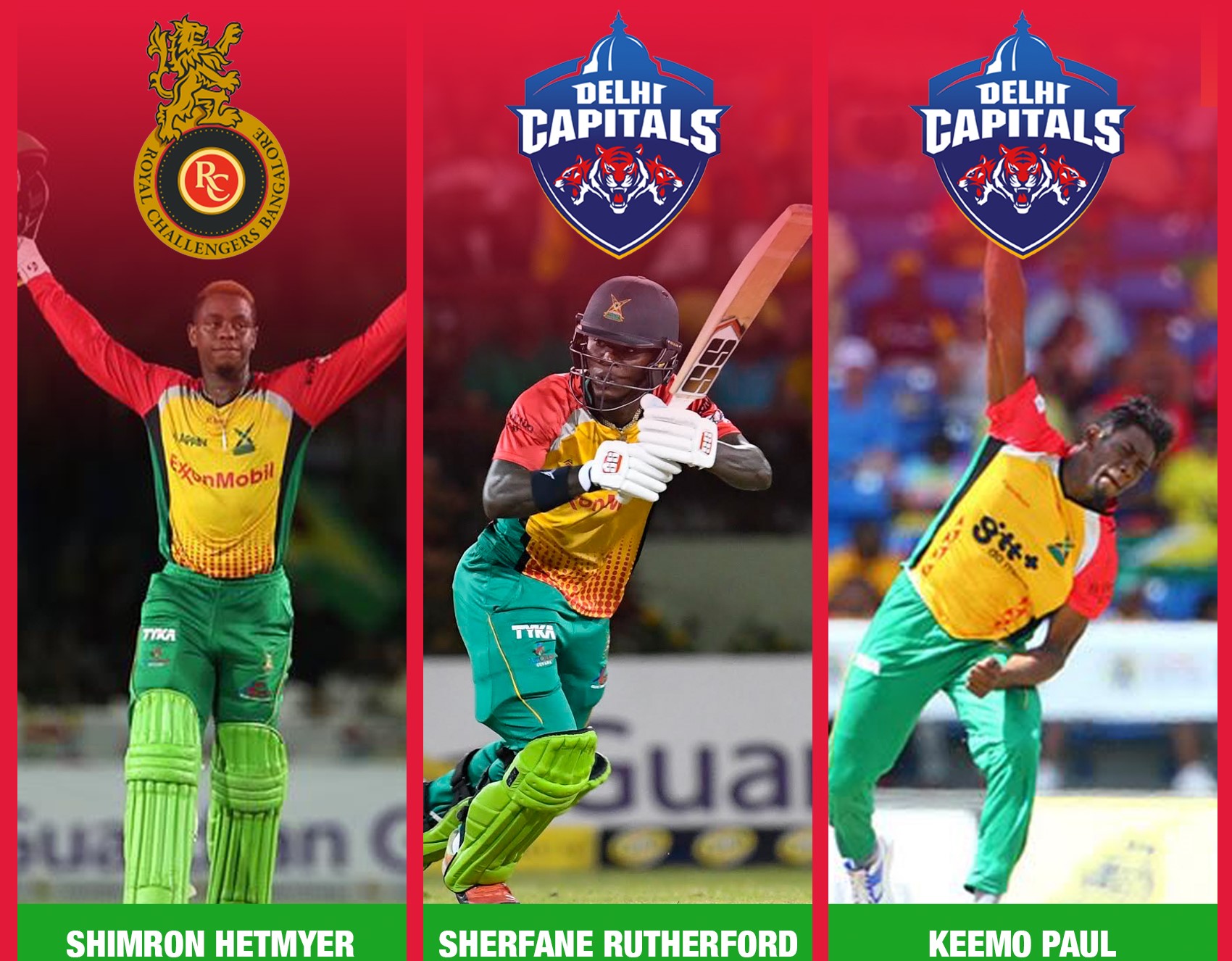By Avenash Ramzan
US$2.4 million (INR 17 crores).
That’s the total value of the six West Indian players bought at the Indian Premier League auction on Tuesday.
The Jaipur payout is even more astonishing when viewed in context: only one of those bought has ever stepped on the field in the IPL.
The other five, all below the age of 23, are still at the embryonic stage of their careers.
In fact, two of them have not even played a full year of international cricket, while one is on the cusp of an international debut.
Another made his debut in September 2016, but has only played six games since, while the future of West Indies batting/leadership has been bestowed on the other, ever since he led the Caribbean side to Youth World Cup glory.
The circumstances that led to the selection of Shimron Hetmyer (Royal Challengers Bangalore), Nicholas Pooran (Kings XI Punjab), Sherfane Rutherford (Delhi Capitals), Keemo Paul (Delhi Capitals) and Oshane Thomas (Rajasthan Royals) are well documented.

For Carlos Brathwaite, reputation, and maybe sentiments, worked in his favour, as he returned to Eden Gardens, the home of Kolkata Knight Riders, and the venue he smashed Ben Stokes for four consecutive sixes to win the 2016 World T20 for West Indies.
It remains, to this day, his last notable performance, a display that appeared good enough to qualify him for the unenviable post of West Indies skipper.
Based on what transpired at the auction, people are still ‘remembering the name.’
The US$700,000 price tag places him third on the highest paid overseas cricketers bought at the auction, behind England’s Sam Curran and South Africa’s Colin Ingram.

Hetmyer and Pooran are the next highest overseas picks, earning US$583,000 each, while Rutherford got the nod at US$277,000, Thomas at US$140,000 and Paul at US$70,000.
It was a colossal payday for a group- barring Brathwaite- who are still woefully inexperienced at the international level. How they manage the imminent lifestyle change would determine their future, as such lucrative deals could, as sporting history has shown, make or break the beneficiary.
The challenge now extends beyond the boundary. There is enormous pressure of being labelled a celebrity in a cricket-crazy country like India, when the laidback approach of the Caribbean was your grounding.
The stark reality is that the sometimes unwarranted attention by fans and social media critics could be an unwelcome distraction to the real task at hand, that is production within the circle of battle.
Then, there is the inevitable question of commitment, a sore topic in West Indies cricket.
T20 cricket has raised the ‘country over franchise’ debate, and while other nations have managed to strike a balance, not so West Indies.
David Paul, the father of Keemo, had this piece of advice for IPL-bound players: “Keep playing cricket at the highest level; franchise cricket is just a part of cricket. For me, I prefer to know you play for West Indies, you cement you place in the West Indies team and you would end up playing franchise cricket all over the world.”
That might be the ideal, but it has not been that simple over the years. It is, as the idiom goes, easier said than done.

The emergence of numerous leagues and accompanying lucrative deals has shifted the players’ focus from committing to West Indies cricket, some going even as far as refusing central contracts.
Strained relations have taken root as a result, leading to public spats, social media outbursts and even a perceived refusal to embrace patriotism, the 50-over World Cup qualifier in Zimbabwe this year being a case in point.
The domestic competitions- Professional Cricket League Four-day and Super50- which Cricket West Indies has mandated players compete in to become eligible for selection, have also suffered from the absence of these much sought-after players over the years, thereby lowering the quality and standard of regional cricket.
Consequently, players’ shortcomings are inevitably exposed at the international level. Test matches and ODIs appear too lengthy, and chronometer of concentration is seemingly fixed to three hours.
Yes, players have to earn; cricket is their livelihood.
However, it is imperative Cricket West Indies, the Players Association and the players find a common ground going forward, for the conveyor belt of talent has been a humble servant to the wider T20 market, rather than being charitable to home.
Any attempt by the stakeholders not to pursue such a course would be to the further detriment of Caribbean cricket development.
The time would come when the ‘Jaipur Six’ would have to choose: they either follow the trend set by their predecessors or be agents of change.
The leagues prefer the former; West Indies cricket desperately needs the latter.
Whom the players associate with could determine their legacies.






